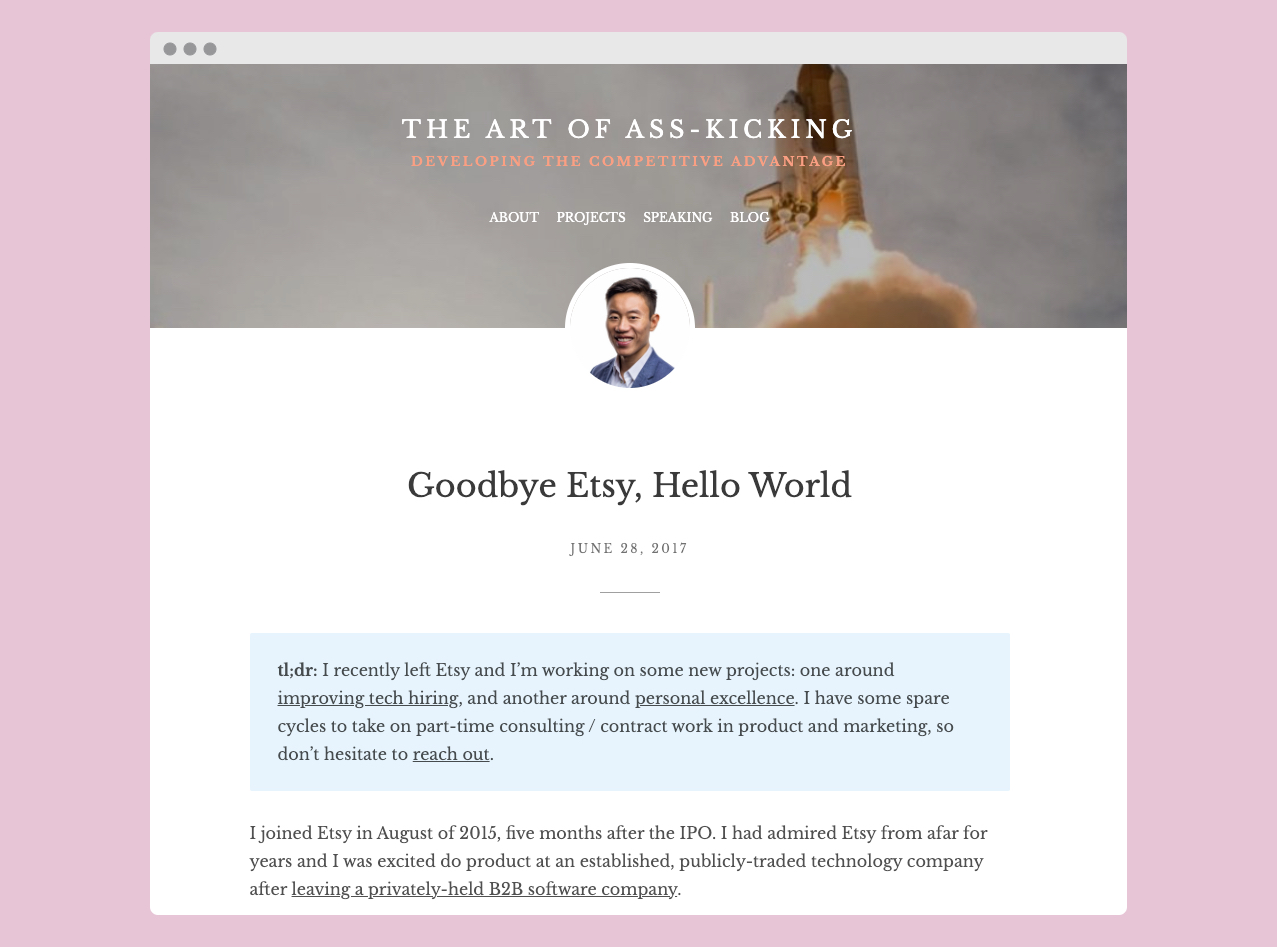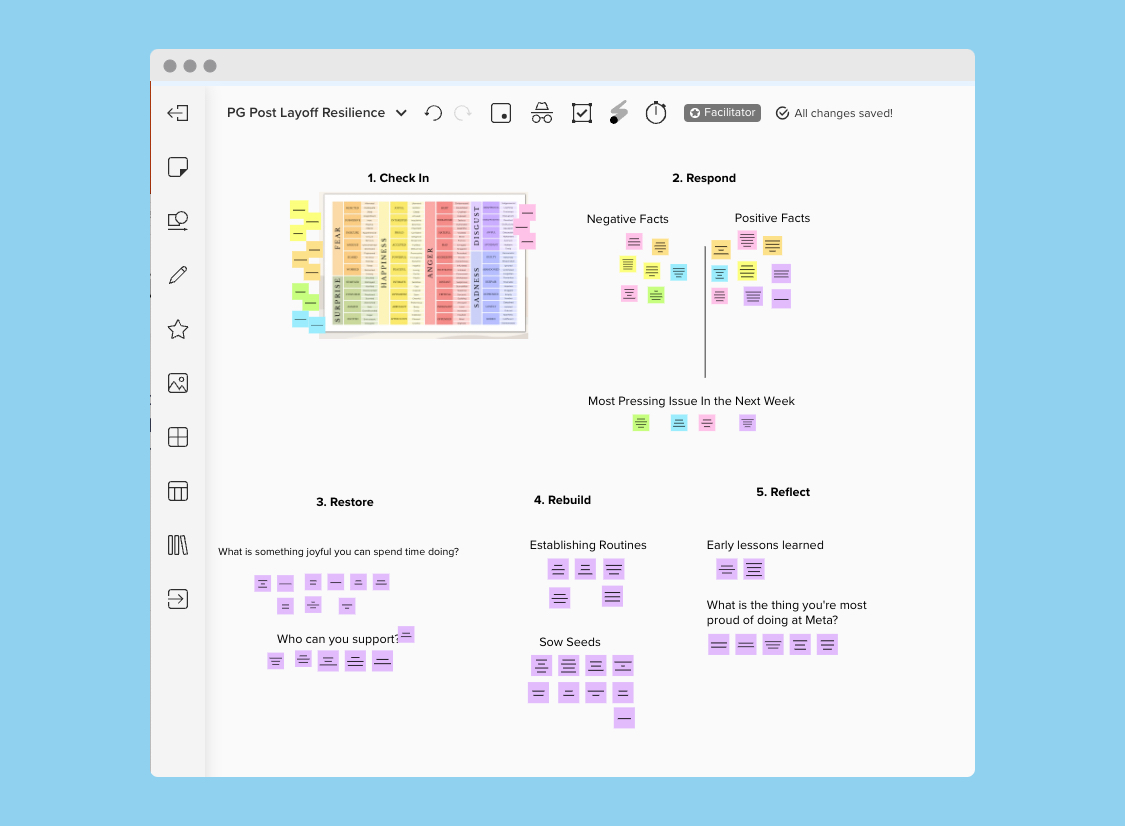
I joined Etsy in 2015, shortly after its IPO, as a product manager on the seller experience team. After the company struggled to beat investor expectations for a year and a half, then CEO Chad Dickerson called an impromptu all-hands meeting the day of our March 2017 earnings call and announced an 8% layoff, along with his own resignation. I remember the audible gasp that went through the room when he shared the news. I certainly hadn't seen that coming, and the warm and fuzzy feeling I felt at work vanished in an instant.
Over 120,000 tech workers have been impacted by a mass layoff in 2022—including at stalwart firms like Stripe, Netflix, Amazon, Coinbase, and my own employer, Meta. Losing your job is never easy, but it’s even harder when there are so many workers on the market and many firms have hiring slowdowns or freezes in place. This environment is probably one of the worst labor markets for tech employees in a decade, which is remarkable given that only a year ago, they were in exceptionally high demand and negotiating lucrative offers from employers.
If you’ve been laid off, you may be confronting urgent questions like:
- How will I pay my bills and support my family?
- What could I have done differently to avoid this situation?
- What value do I have as an unemployed person?
The Rethinking Resilience series is all about how you can better cultivate the skills of resilience during uncertain and volatile times—and getting laid off certainly qualifies. Even for those who remain employed, the possibility of a mass layoff adds a new layer of stress and anxiety that requires courage, flexibility, and grit to endure.
As a reminder, my framework for resilience focuses on how four skills help you withstand and overcome adversity and change: responding in the face of change, restoring what change has taken away, rebuilding in the wake of change, and reflecting on the lessons of change. Let’s walk through how you can enact these skills in the midst of a mass layoff.
Respond
News report of Etsy’s leadership change and layoff. (Source: Vox.com)
While I wasn't impacted by the first round of layoffs at Etsy, I wasn't out of the woods. The next day we met our new CEO, Josh Silverman, who articulated a set of "ambulance projects" that the company needed to make our highest priority. These projects had to do with reducing costs and driving new buyers to the marketplace.
Notably absent were investments on the seller-facing side of the product, and Josh's reminder that we needed to say no to "the qualified many to preserve the vital few." A few months later, Josh let go of another 15% of the company, including myself. One hundred and twenty of us got six weeks of severance and two months of health insurance.
Responding in the face of change means to work up the courage to take decisive action and mitigate harm. Being laid off triggers a cascading set of actions that you must confront in order to protect yourself and create breathing room to make your next move. While your immediate thoughts may go to finding a new job, there are several steps that you may need to tackle first.
- Understand your severance package. Most tech companies are not kicking former employees to the curb with nothing. You likely have several weeks, if not months, of pay, healthcare coverage, and perhaps other benefits, like additional stock vests or recruiting support. Make sure you sign up for anything that could be useful and know exactly what you're owed.
- Make a six-month financial plan. Everyone's financial situation is different, but assume that it might take some time for you to find and start a new job. Can you reduce your spending and cut expenses such that you have a six-month window of safety? Actions like making smaller payments on debt, tapping into rainy-day savings, filing for unemployment, and expanding any side income you might already bring in will claw back some much-needed peace of mind when job hunting.
- Consider cutting housing costs. Housing is probably your largest expense by a long shot. In the case that your job hunt drags out, consider moving or changing your housing situation—whether that's back home with parents or to a cheaper place in your current location. It doesn't have to be permanent: subletting your apartment or renting out your home could let you return when things stabilize.
Restore
Facebook group of Percolate alumni. (Source: Facebook/Jason Shen)Before working at Etsy I worked at a rapidly growing enterprise marketing company called Percolate. We were backed by Sequoia and had a swanky office in SoHo with an espresso machine, catered breakfast and lunch, and an in-house photographer who would post "action" shots of us at work to our Instagram channel each week.
But the company grew too fast and revenue couldn't keep pace. Shortly after I left Percolate, 40 employees were laid off in sales, marketing, client services, and recruiting. I heard the news over brunch with one of my former coworkers and started the Percolate Alumni group on Facebook. As former coworkers quickly added each other, it became a source of community for support, encouragement, and new opportunities.
Restoring what change has taken away is about checking in with yourself and connecting to your community for support and love. When it comes to being laid off, this means taking time to breathe and be with people who care about you before jumping back into the fray. Losing your job is a blow to your self-esteem and sense of security. The emotional weight of being let go can be heavy, and you need to make sure you're taking care of yourself in the face of it.
- Take time to grieve and be in your feelings. It may seem strange to talk about grief when no one has died, but grief describes the human response to loss—and losing your job is one of life’s top five greatest stressors. Make space to observe how you feel in your body—through a walk, a long bath, or in a public park or coffee shop. Avoid coping strategies to distract (binge watching or doom scrolling) or numb (weed or booze) your feelings, and face them head on. This work will prepare you to land a great next role, so don’t skip it.
- Make specific requests for help from your network. Everyone loves a winner, but it takes real courage and strength to reach out when you're down. That said, you might be surprised at how willing former classmates and coworkers are to help. Research by Heidi Grant at Columbia indicates that many people want to help—but are waiting for a sign from you to avoid offending you with a proactive offer. Make an effort to contact individual people and ask for introductions, a look at your resume, or a mock interview.
- Lend a hand to others. This might seem counterintuitive (you’re the one who needs help!), but aiding other people is an important way to build your confidence and sense of self. It's hard to feel powerless and hopeless when you're actively helping someone else. Many universities have an alumni mentoring program you can sign up for, or try a platform like Merit (for which I wrote a small angel check). Merit supports underrepresented people in tech; you’ll find yourself invigorated speaking to these young aspirants and realizing that you do have worthwhile experiences and knowledge to pass on.
Rebuild
My blog post announcing my departure from Etsy. (Source: Jason Shen)While I was already thinking about leaving Etsy when I was let go, the early departure threw me for a loop. I was grateful to be offered a part-time product management role that summer by a former colleague who had founded a collaborative whiteboarding startup. I worked Monday through Wednesday in my contract gig and used Thursday and Friday to pursue my own startup.
A few months later, I got the opportunity to participate in the TED Residency, during which I gave a talk on a reimagining of the hiring process. I convinced my cofounder to quit his job in November 2017 so we could work full-time on our startup in December, and even taught a General Assembly course on product management in January to make a quick buck in the middle of my fundraise. It wasn’t until February, seven months after being let go, that I closed a pre-seed round of funding and could breathe a sigh of relief.
To rebuild in the wake of change is to start taking steps in a new direction and rally toward a better future. Start to stretch yourself. We can often get into a rut with a job, and resilience is about taking this opportunity to break out of old patterns and try out new rhythms and styles that might work for you. While you may experience a lot of uncertainty about the future, try to channel that energy toward productive ends.
- Invest in education and creation. Being laid off is an opportunity to focus on yourself rather than your employer. Take classes, read books, and network with people who can help you become better at your craft. EdX, Maven, and good old YouTube are incredible sources of knowledge. Make sure you produce something as a result of your learning—even if it’s just a blog post, a sketchnote summary, or a post on LinkedIn. Making an artifact will ensure that you internalize the knowledge while showcasing your resourcefulness to potential employers.
- Build a structured daily routine for working and resting. A full-time job forces you to work with some structure. The rhythms of the day and week help guide our lives—when we sleep, when we eat, when we play. Just like many people had to insert more structure into their lives during COVID lockdowns, unemployment means building routines for your morning, dedicating time to find new opportunities, and setting a hard stop for the day. Try to compartmentalize your time to avoid letting “relax time” commingle too much with “work time.”
- Be open to new career possibilities. We are more than our job title. Consider whether this layoff could be a moment to pivot careers. Maybe you’re a software engineer who always wondered about being a product manager, or you’ve always worked for a big corporation but are wondering about life at a smaller firm or in a different industry. When someone reaches out with an opening that’s different from what you had in mind, consider taking the meeting and learning more. Have some informal conversations with people who are occupying a job different from your past experience, and see if a switch might be in the works.
Reflect
Results of an impromptu layoff retrospective with former members of my team. (Source: Jason Shen)In November my most recent employer Meta laid off 13% of the company—its first mass layoff in the company’s 18-year history. I recorded a video when the rumors first emerged about possible layoffs and another one after they had been conducted—including what I got wrong.
One of the first things I did post-layoff was organize a retrospective for myself and my former teammates who had been let go—moving through each of the four skills of resilience. In Reflect, I asked them to identify lessons they had learned while at Meta and what they were most proud of achieving. For many, it seemed the entire experience was still pretty raw, making it hard to answer fully. But by planting that question in their minds, it would percolate for the weeks to come, enabling them to make meaning and gain additional insight from their time at the company.
To reflect on the lessons of change is to look back at your journey and within yourself to find new insights. In his study of extraordinary makers, pioneers, and leaders, Harvard professor Howard Gardner observed that they “stand out in the extent to which they reflect—often explicitly—on the events of their lives, large as well as small.” This period of reflection may not be pleasant, but it will allow you to gain agency over the layoff so that you’ll be able to move forward from a position of strength.
- Document your achievements and lessons learned. We retain information and internalize knowledge best when we’re forced to articulate our experiences in detail. A structure like the STAR method (Situation, Task, Action, Result) or the SQCA approach (Situation, Complication, Question, Answer) can make sure you emphasize what you did, how you go there, and why it mattered. Given the advances in OpenAI’s ChatGPT, you might be able to take a rough draft of your answer and give it the prompt, “Please rewrite what I said as an answer to the interview question: Tell me about a project you are proud of.” Make sure you closely read the answer, and add details and correct mistakes!
- Consider what matters most to you now. We are not static human beings. When a dramatic event like a layoff occurs, we should use it as a chance to pause and reconsider where we are. Are you happy with your career trajectory? What was your day-to-day life like when you were working, and what did you most and least enjoy about your job? Enumerate the tasks (e.g., analyzing data, talking to customers, improving processes), the content area (e.g., consumer vs. finance vs. ecommerce), and the people (e.g., the values and personalities of the people you worked with). How might you move toward what matters most in your next role? Try to frame this moment as a turning point in your journey toward something better and more aligned with your unique and evolving skills and interests.
- Write a vision for where you want to be in six, 12, and 24 months. The old “five-year plan” is obsolete. Most of us are living lives that are significantly different from what we might have predicted five years ago, and the technological and macroeconomic forces we’re in make long-term planning very difficult. Instead, think about where you want to be in six months (likely in some kind of new role or work situation), in 12 months (succeeding and thriving in that new role), and in 24 months (having achieved some meaningful outcomes and personal growth). Try to get as detailed as possible, and don’t worry about being wrong. Focus on what an ideal situation would be. Let this vision guide your decisions and remind you of what you truly want—which can be helpful when you are tempted to compromise for a suboptimal choice.
Getting laid off can take an emotional toll. But never forget that many of the people you look up to and admire have been laid off or let go from roles in the past, and it did not prevent them from making important contributions in their field.
To respond with resilience, take decisive action to mitigate harm, find sources of support, invest in yourself, create a routine, and stay open to new opportunities. It’s also essential to reflect on the lessons of change and create a vision for the future that is rooted in what matters most to you. Taking the time to do this work will help you to move forward with confidence and strength, and will ultimately help you land a great new role.
The Only Subscription
You Need to
Stay at the
Edge of AI
The essential toolkit for those shaping the future
"This might be the best value you
can get from an AI subscription."
- Jay S.
Join 100,000+ leaders, builders, and innovators

Email address
Already have an account? Sign in
What is included in a subscription?
Daily insights from AI pioneers + early access to powerful AI tools











Comments
Don't have an account? Sign up!
Excellent and topical post. Thank you!